There is no shortage of Pachyrhinosaurus toys. As ceratopsian toys go it is only outnumbered by Triceratops and Styracosaurus, which have been more popular for far longer than Pachyrhinosaurus. But here’s the thing, all those Pachyrhinosaurus toys represent the same species, P. lakustai, immediately recognizable thanks to three prominent horns above and behind the eyes on the midline of the frill. That little extra flare does a lot for the popularity of P. lakustai but there is still a demand for the other two. P. canadensis is notable for being the type species of the genus and the largest of the three species. P. perotorum is notable for having lived in Alaska.

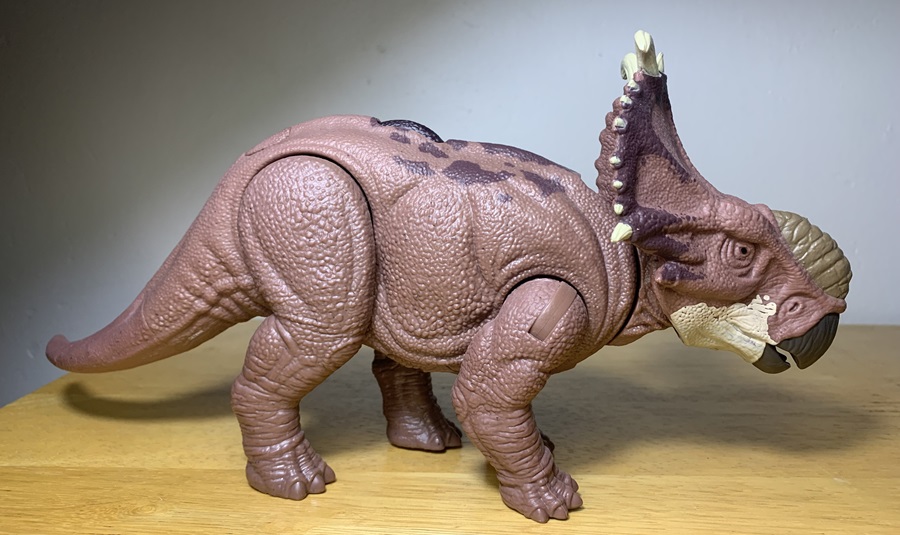
Leave it to Mattel to make the first Pachyrhinosaurus toy that represents something other than P. lakustai. But does it represent P. canadensis or P. perotorum? With a somewhat flat and rounded nasal boss the toy appears to represent P. canadensis. This is basically how it appears in Chaos Theory too but who can say if the designers had a particular species in mind.
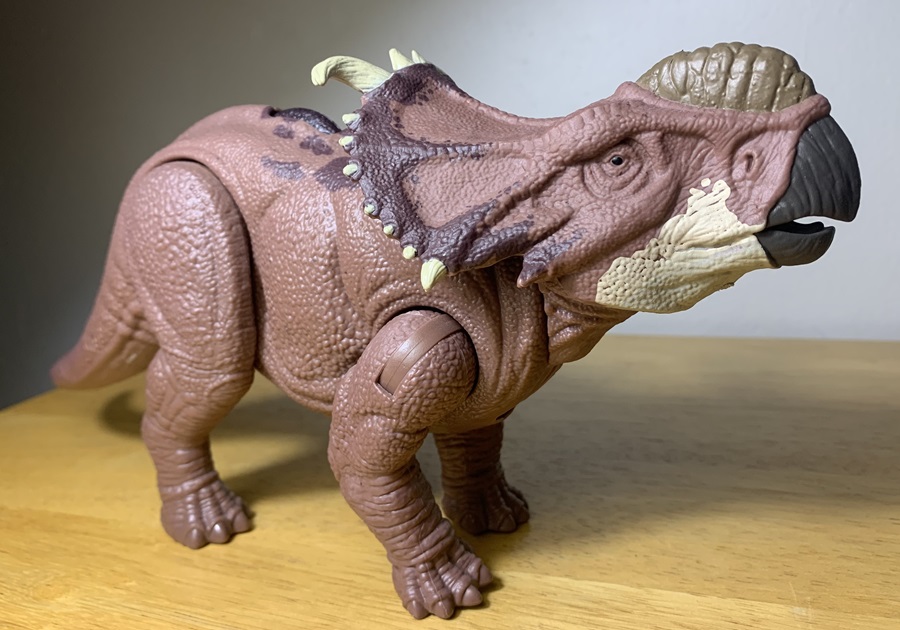
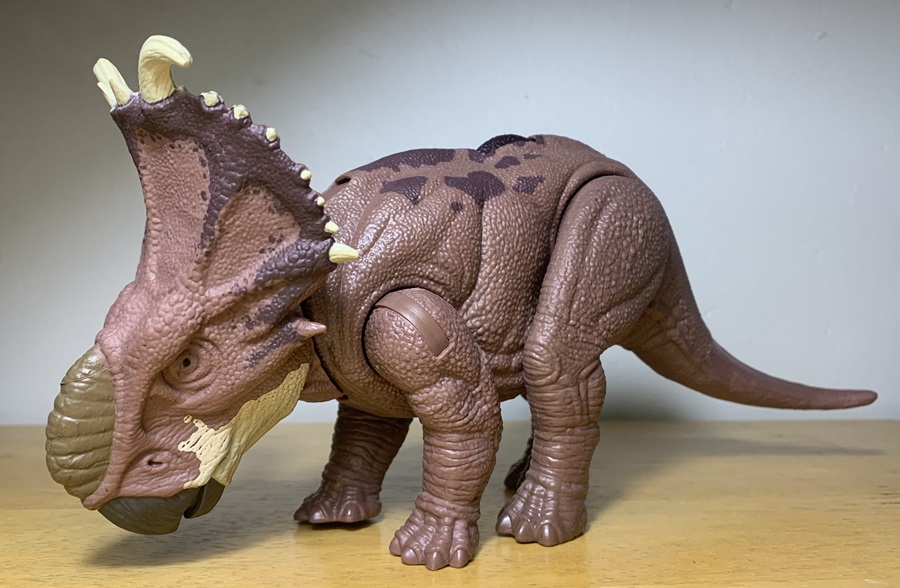
With an estimated length of 19.7–26.2’ (6-8 meters) and an estimated weight of 3.3–4.4 tons, Pachyrhinosaurus canadensis was one of the largest of all ceratopsians. The Mattel Pachyrhinosaurus measures about 12” long and stands 5” tall at the hips. This puts it between 1/19 and 1/26 in scale depending on which length you’re scaling down from.
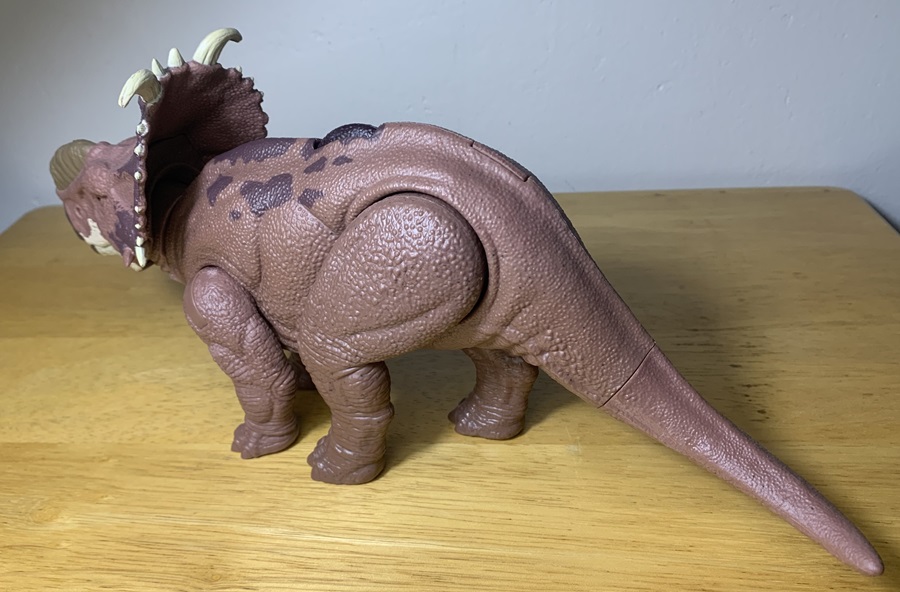
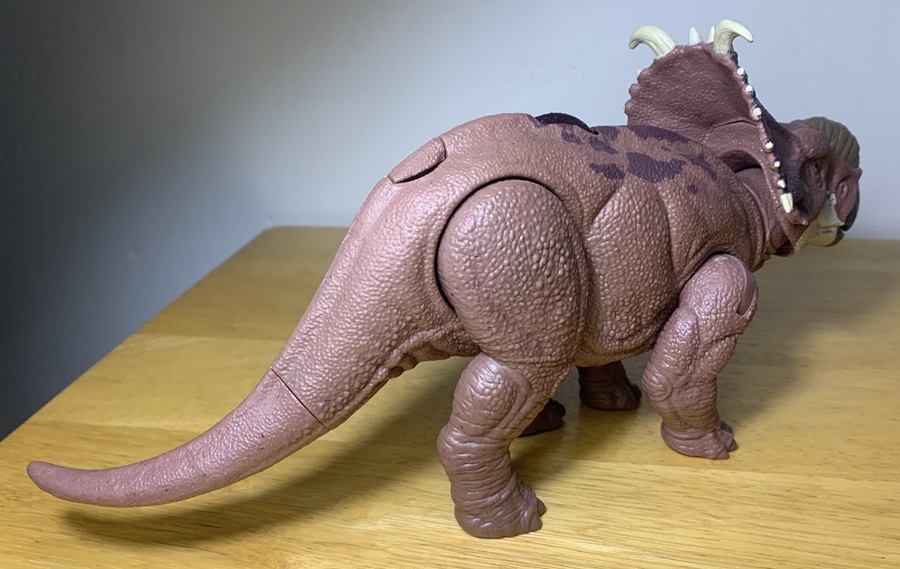
The head is articulated at its base which allows it to rotate completely around. The forelimbs can rotate around and swing in-and-out. The hindlimbs can rotate around and pivot outwards. The action feature is tied to a wheel on the back. When the wheel is rotated the head bucks up and down and the toy lets out a series of roars. The best part about this action feature is that you can pose the head at various points depending on where you leave the wheel positioned. A portion of the tail comes unattached from the figure and once attached it cannot be removed.
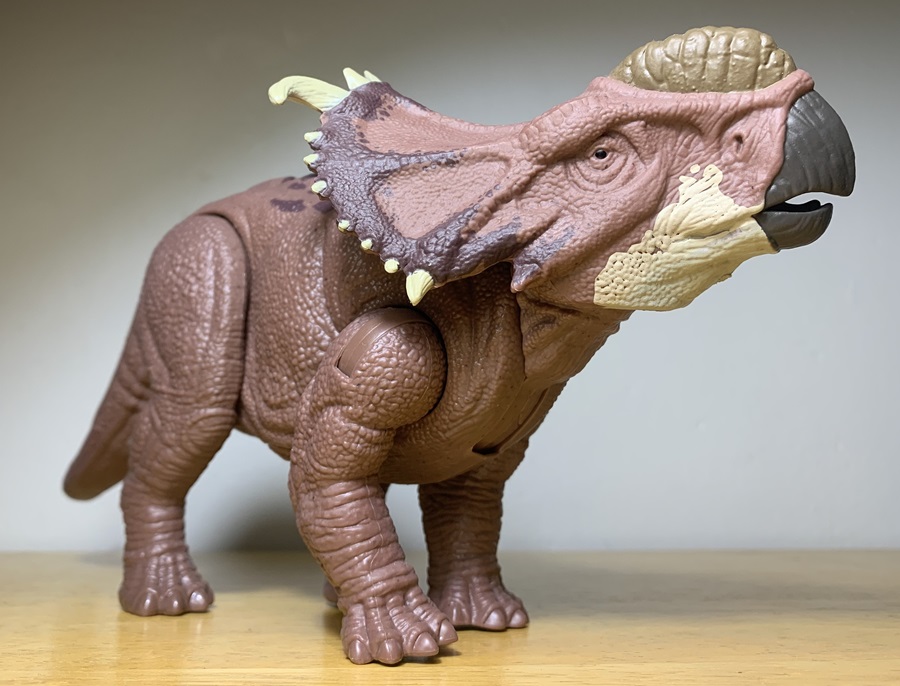
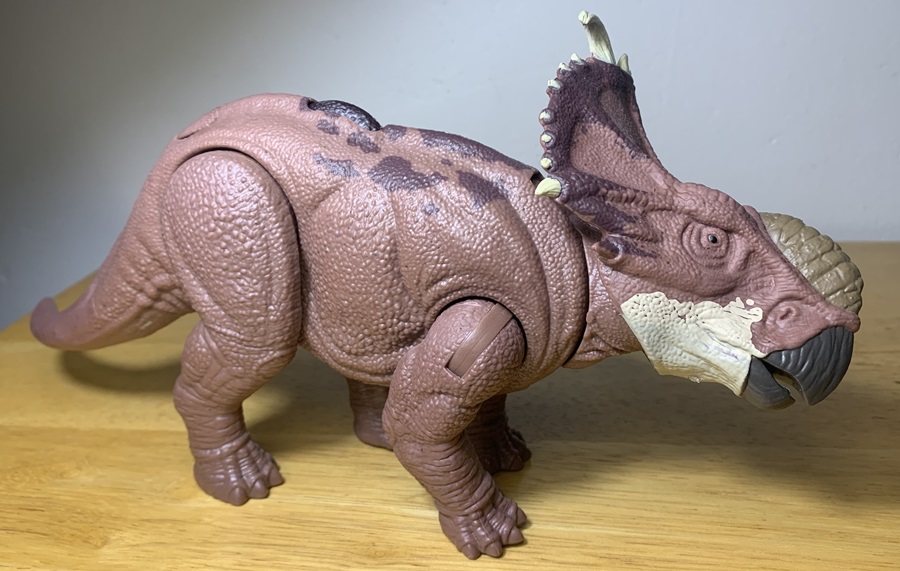
The head is rather shrink wrapped, and not just in the typical places like the eye sockets but also in some unusual ones. The antorbital fenestra is visible, even though Pachyrhinosaurus didn’t have antorbital fenestra. And the frill is shrink wrapped in places where it shouldn’t be either, suggesting openings in the frill that wouldn’t be there. I’m not really judging the toy on this, accuracy pedants don’t typically collect Mattel dinosaurs, but I do find it amusing and worth pointing out.

The detail work on the head is decent and consists of pebbly scales on the front and back of the frill, grooves etched into the beak, and wrinkling around the muzzle. The nasal boss is well defined and highlighted. The supraorbital bosses are thickened and scaly, but some keratinous bits would have been appreciated here. The jugal and epoccipital horns are present and on the top of the frill we get large outward hooking horns with two smaller horns between them.
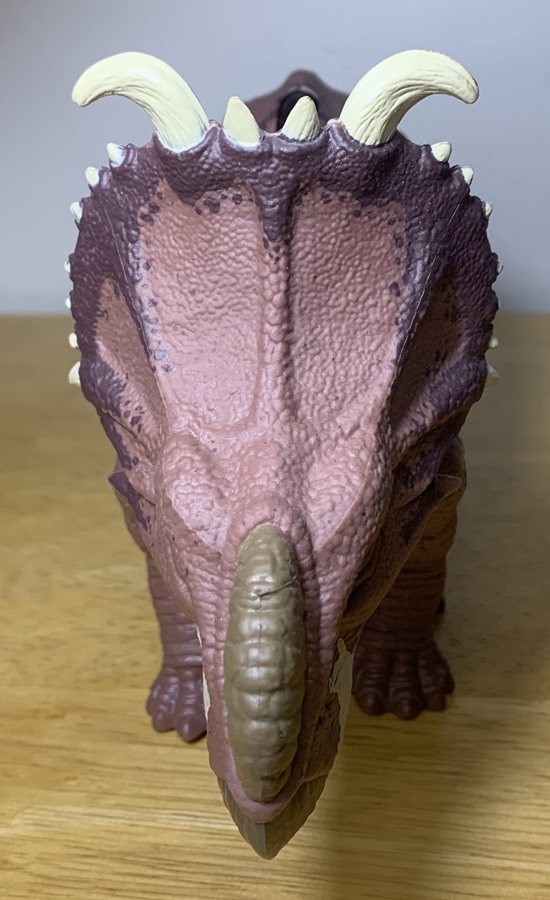
The rest of the body is a typical generic ceratopsian body with inaccurate elephantine limb anatomy. The shoulders have a muscular hump above them, and the toy is tallest at the hips. A shallow ridge runs down the midline of the back. Detail work is excellent with the entire toy covered in pebbly scales. The scales are largest around the thighs and gradually get smaller as you run down the tail. Scales are replaced with wrinkles below the elbows and knees.
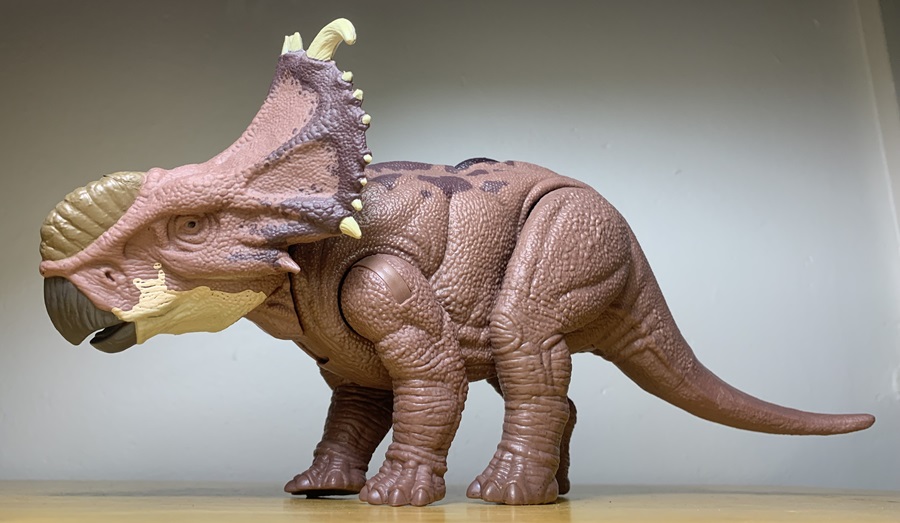
The toy is mostly a naturalistic looking milk chocolate color that is pleasing to look at and refreshing when compared to more garish toys like the Regaliceratops or Diabloceratops. It’s a pretty bare bones paint job though, with some dark brown spots above the shoulders being the only other color in play.
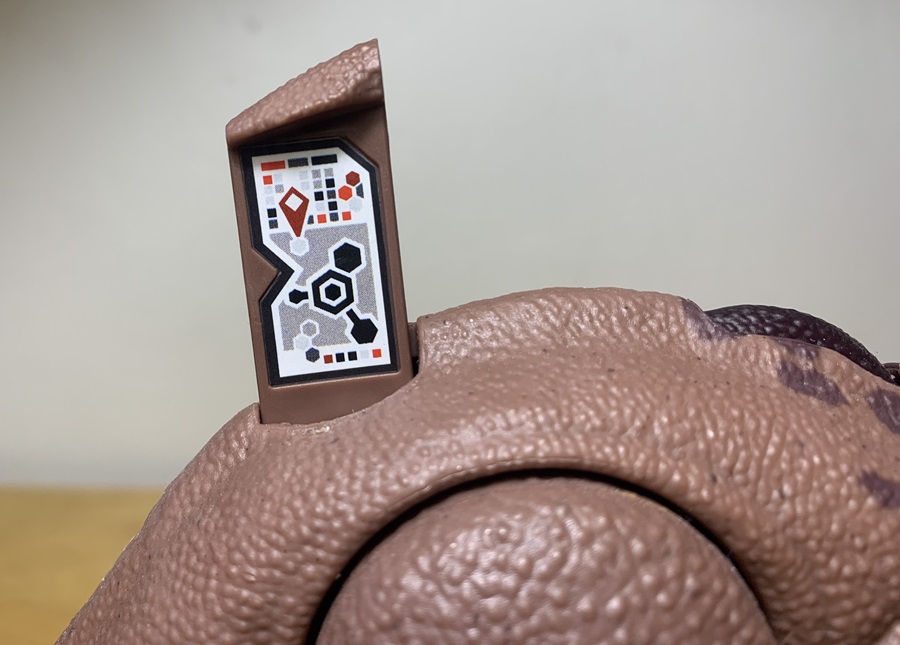
Some special attention was given to the head though. Dark brown runs along the edge of the frill and each eppocipital is picked out in creamy white. The nasal horn is its own shade of brown and the beak is dark brown. The only horns that are not painted are the jugal horns. Some white coloration runs along the lower jaw and throat but terminates abruptly where the head ends. It would have been great if it continued down the underside of the toy. The eyes are brown with large black pupils.
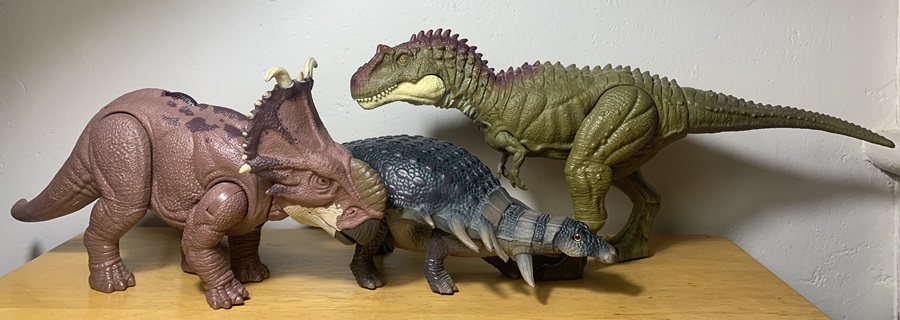
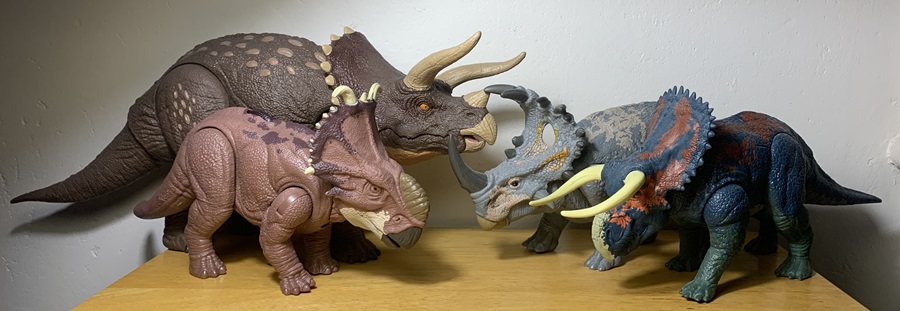
This is of course not Mattel’s only Pachyrhinosaurus toy. They made one in 2018 but released it under the name Sinoceratops. That toy is still one of my favorite Mattel ceratopsians and thanks to its more elaborate paint job it’s visually more appealing than this one. It represents P. lakustai and it’s really cool that you can now have a different Pachyrhinosaurus species to display alongside it.
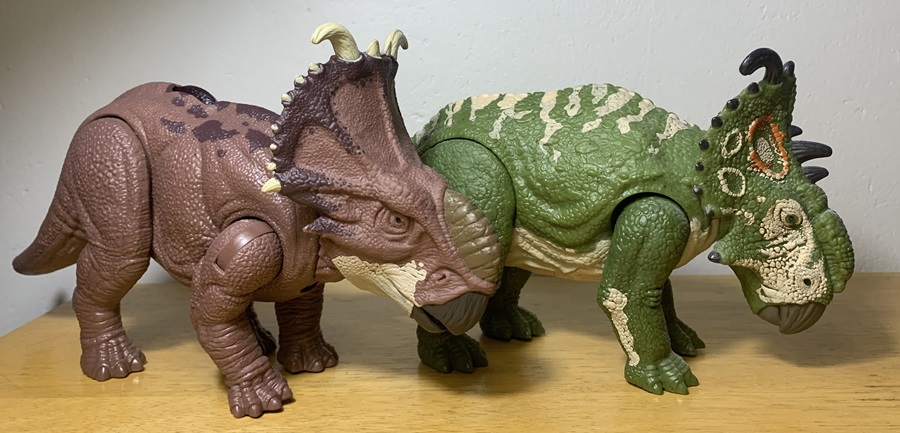

The Mattel Pachyrhinosaurus is notable for being the first toy of P. canadensis and is a nice return to form for Mattel after a string of obnoxious looking ceratopsians. It’s subtle yet somewhat boring paint job suits it well and it possesses the high level of detail typical of Mattel dinosaurs. It’s a fun action figure of an obscure species and one of the highlights from the Chaos Theory wave. It is currently available and retails for about $15-18.

Disclaimer: links to Ebay and Amazon on the DinoToyBlog are affiliate links, so we make a small commission if you use them. Thanks for supporting us!




Javítás:Vitae”
Tetszik,végre megcsináltak mégegyet 3 faj közül.Mellete van a sorban világító Parasaurolphus(nem rossz,a világító mechanizmus miatt komolytalannal tűnik,Van az új Ceratosaurus(ez szintén jó,a feje szrintem még a Hammond Collectionosat is megelőzi,illetve az én kedvencem a négy közül Major a Majungasaurus(szerintem a Safarit kivéve a legpontosab Majungasaurus)
It is the only medium size Chaos dino I have. I have yet to pull the tail on it! At this point, the only Pachyrhinosaur action figure I’m missing is the Dino Riders one. The antorbital fenestrae was definitely a choice. Great review though.